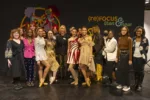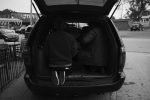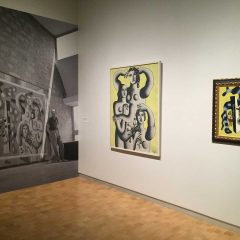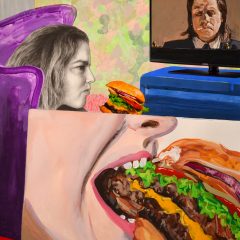[Katie reports from the UK, where she gets a taste of the “maker movement” encouraging everyone to take a hands-on interest in the creation of products and technologies. — the Artblog editors]
Today’s world seems to be filled with brand-new technologies, invented and reinvented at lightning speeds by the youngest of experts. The maker movement can be broadly defined as a group taking a DIY approach to these new technologies, prioritising the asking of questions and free experimentation in a culture of very hands-on creation.
Collaborative workshops known as “hackspaces” are popping up all over, filled with making equipment and ready minds; a perfect example is the BuildBrighton hackspace in the notoriously creative UK seaside town, which provides resources for every kind of making, from electronics to woodwork, and is made up of a diverse selection of enthusiastic members.
A new kind of library
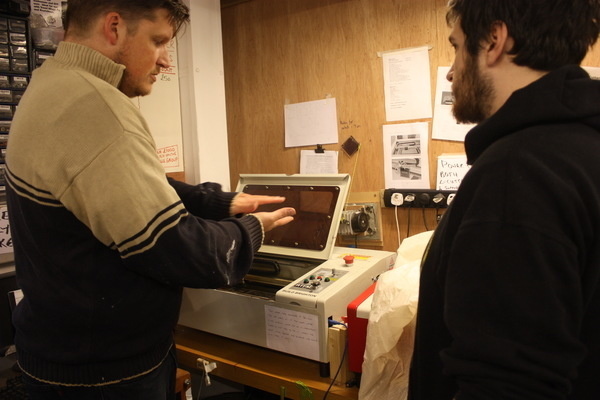
Computer programmer and hackspace member Chris Holden tells me, “There are a cluster of these places popping up–the Internet’s playing a big part in it. People are saying, ‘I didn’t realise that was on our doorstep.” And people are less frightened to have a go.” Brighton’s hackspace began with a robotics group; as its attitude of playful experimentation gained popularity, the members opened up the focus of the group. Eventually, the group found its own premises in an old warehouse. Now it is home to a wide range of equipment, including woodworking tools, a metal lathe, a laser cutter, 3D printers, an electronic kit (including a bank of components ordered by members), and most importantly, a vibrant community of creative minds.
Member Nicolas Seymour-Smith likens these spaces to libraries, but reinvented to fit the needs of today. “Traditionally, libraries were all about having access to books, but we don’t need that in the same way anymore, when the Internet’s out there with all of the information that we need,” he says. “But there is still a need for a public space [where] we can go to to learn how to do things; to fix things. It’s a different type of information.”
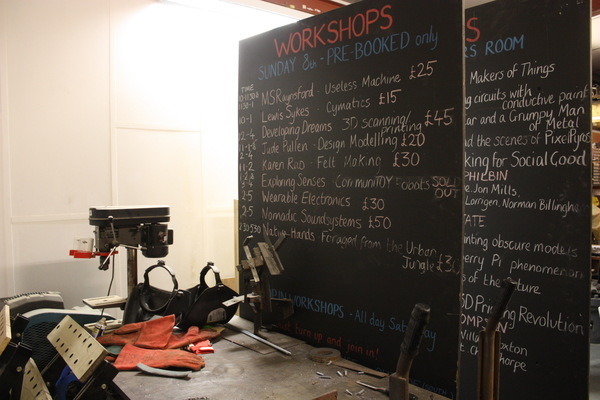
The exchange of ideas and skills is central to these spaces. “It starts out with one person having an isolated idea that they’ve been playing with, but having a gathering of people, the ideas feed off each other in interesting ways,” Seymour-Smith says. “We’ve all got crazy ideas in our heads, but we don’t know how they can be realised until we can see what other people can do.” The BuildBrighton website has two message boards, where members and non-members can discuss and float ideas and find collaborators.
Open-source collaboration
Seymour-Smith is part of collaborative art/technology group WLTM/ake, which recently put together an interactive sound piece at the Doodlefest exhibition at Brighton’s ONCA gallery, using conductive ink to turn doodles into a programmable musical instrument. The group began with a trickier idea resembling a much more complex theramin and worked it into something that used an existing technology–a MaKey MaKey–and could be displayed up on a wall; a member made some drumsticks to play the creation with, creating something a little like a drum machine.
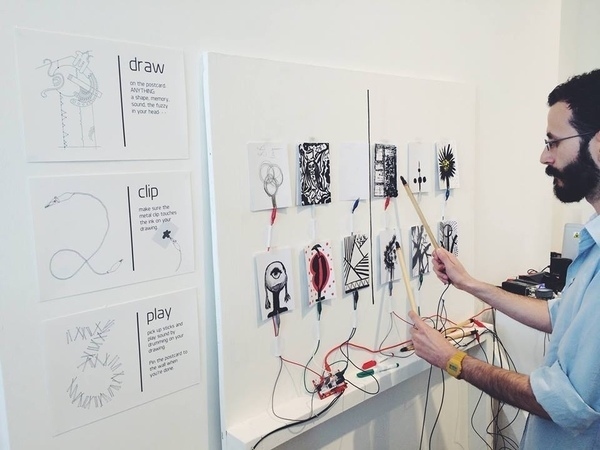
Realising that the work was beginning to move in a new direction, Seymour-Smith became excited about getting some new influences working on the project. “If you just know what you don’t know, then you know where to look,” he says. “I thought, I need to talk to a rap producer, and I need to talk to an electronic artist.” Toward the end of the show, one musician hooked up his computer and rejiggered the machine, so that instead of playing sounds, some parts of it would change the chords of an existing track, creating a totally different interaction. The musical doodle stand looks likely to appear at more events in the future, developing and evolving as it goes.
Holden talked about the atmosphere of open collaboration in these communities. “There are more projects and ideas floating around than there are hours in the day, so there’s no need to be guarded,” he explains. Skills are freely shared in what some describe as an open-source atmosphere, in which different areas of expertise combine to realise ideas for the sake of it. Traditional divisions between artist and technologist, visionary and technician, are constantly renegotiated and subverted.
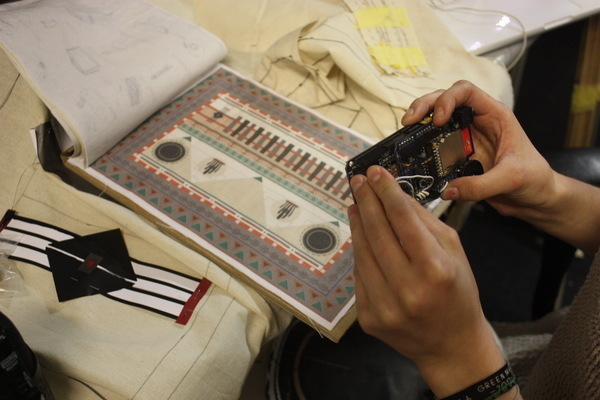
While traditional education prioritises an ability to follow instruction and learn from source material, in these counter-cultures, the priority is on finding ways to do things for yourself. The entire hackspace is built on those principles–members pay what they can toward running costs and the price of new machines. Even the walls of the space itself have been built up by its members. Events such as “Maker Faires” do showcase the achievements of exhibitors, but exist just as much to encourage others to rethink and reinvent the world around them.
In a recent interview, materials scientist Mark Miodownik spoke about why we need to be conscious of the importance of making in our societies. “People who mostly think and speak end up in positions of power, whereas makers, who often like to be in the lab making stuff, don’t end up making the big decisions,” he says. “So workshops shrink; making shrinks. We need some people to shout, very loudly, that making stuff with your hands and creating objects is really important.” These spaces represent a new approach to objects and technology, and we are only seeing the beginning of what can be achieved there.
For more information, visit BuildBrighton Hackspace’s blog.



